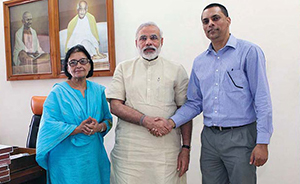Applied Creativity in Mental Health
Creativity and innovation. It is almost conventional to trumpet their importance, their utmost necessity for progress. However, applying creativity in the actual world necessitates creativity.
IBM conducted a survey of more than 1500 CEO’s from 60 countries and 33 industries and found that creativity is valued as the most important skill for the modern world.
It is of interest that The Torrance Test of Creative Thinking found that since 1990, creative thinking skills have been in sharp decline. Although creativity was not intentionally cultivated in the majority of school children studied, the correlation of lifetime accomplishment was more than three times stronger for children who thought creatively (as a result of cultivated opportunity for creativity), than for children with a high IQ.
In “Creativity: The Psychology of Discovery and Invention,” Csikszentmihalyi writes that “creativity does not happen inside people’s heads, but in the interaction between a person’s thoughts and a sociocultural context. It is systematic rather than an individual phenomenon.”
—Bethany Halbreich is a Creativity and Innovation Consultant for PepsiCo, a TED Resident, and the Founder and CEO of Paint the World, an international not-for-profit organization dedicated to accelerating the world’s creative capacity.
—Professor Uriel Halbreich is Currently Professor of Psychiatry and Director of BioBehavioral Research at the State University of New York (SUNY) at Buffalo NY, USA. He is Chair of The World Psychiatric Association (WPA) Section on











Comments.